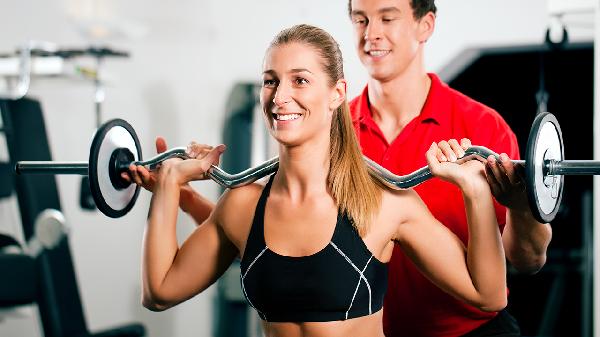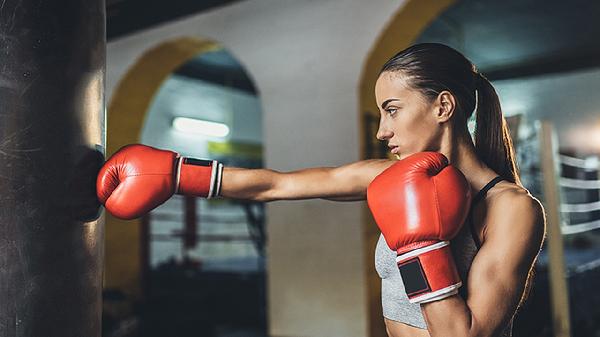Many men have a habit of working out regularly, often opting for simple equipment at home, with dumbbells being a common choice. But are you using dumbbells correctly during your workouts? Mastering the proper techniques for targeting different muscle groups with dumbbells can greatly enhance your physique.
1. Chest
1. Flat Bench Press: Primarily targets the thickness of the pectoralis major and the chest groove.
Movement: Lie on a bench holding dumbbells at shoulder level, palms facing up. Press the dumbbells upward until your arms are fully extended, pause briefly, then slowly lower them back to the starting position. Tip: The upward and downward movements should follow an arc to fully contract and stretch the pectoralis major.
2. Incline Bench Press: Primarily targets the upper chest muscles.
Movement: The technique is similar to the flat bench press, but the bench is adjusted to a 30-40 degree angle. Perform the press while lying on the inclined bench.
3. Flat Bench Fly: Primarily targets the middle chest groove.
Movement: Lie on a bench holding dumbbells with palms facing each other, arms extended above your chest. Bend your elbows slightly and lower the dumbbells in an arc to the sides until your chest is fully stretched. Then, use your chest muscles to lift the dumbbells back to the starting position.
4. Straight-Arm Pullover: Expands the chest cavity and is an excellent exercise for the pectoralis major and serratus anterior.
Movement: Lie on a bench with your shoulders supported, feet on the ground, and hold a dumbbell with both hands above your chest. Slowly lower the dumbbell in an arc behind your head (feel the chest and ribcage stretch), then pull it back to the starting position. Note: To prevent injury, lower the dumbbell slowly.
2. Shoulders
1. Shoulder Press: Primarily targets the anterior, middle, and posterior deltoids.
Movement: Sit holding dumbbells at your sides, elbows out, palms facing forward. Press the dumbbells upward in an arc until fully extended, pause briefly, then slowly lower them back to the starting position. Tip: Can also be done standing, with both arms or alternating arms.
2. Lateral Raise: Primarily targets the middle deltoids.
Movement: Hold dumbbells in front of your thighs, body slightly leaning forward, elbows slightly bent. Raise the dumbbells to shoulder height, pause briefly at the peak contraction, then slowly lower them back. Can also be done one arm at a time, alternating arms.
3. Bent-Over Lateral Raise: Primarily targets the posterior deltoids.
Movement: Hold dumbbells with palms facing each other, bend your knees and lean forward, keeping your body stable. Raise the dumbbells to the sides, then slowly lower them back.
4. Shrug: Primarily targets the trapezius.
Movement: Hold dumbbells at your sides, knees slightly bent, body leaning slightly forward. Shrug your shoulders upward as if trying to touch your ears, pause briefly, then slowly lower them back.
3. Back
1. Bent-Over Row: Primarily targets the latissimus dorsi.
Movement: Bend your knees slightly and lean forward, holding dumbbells in front of your thighs. Pull the dumbbells upward until your elbows are at or slightly above shoulder height, pause briefly, then slowly lower them back. Note: Focus on contracting and stretching the latissimus dorsi, avoid lifting your upper body to prevent using momentum.
2. One-Arm Bent-Over Row: Primarily targets the outer and lower back.
Movement: Hold a dumbbell with one hand, palm facing inward, and place the other hand on a stable object at knee level for support. Pull the dumbbell to your waist (fully contracting the back muscles), pause briefly, then slowly lower it back (fully stretching the back muscles). Repeat on the other side.
3. Stiff-Legged Deadlift: Primarily targets the lower back, glutes, and hamstrings.
Movement: Hold dumbbells in front of your thighs, feet shoulder-width apart, legs straight, back straight. Bend forward at the waist, keeping your head up, until your upper body is parallel to the ground. Then, use your lower back muscles to return to the starting position. Note: To maintain tension, do not let the dumbbells touch the ground. Perform the movement slowly.
























